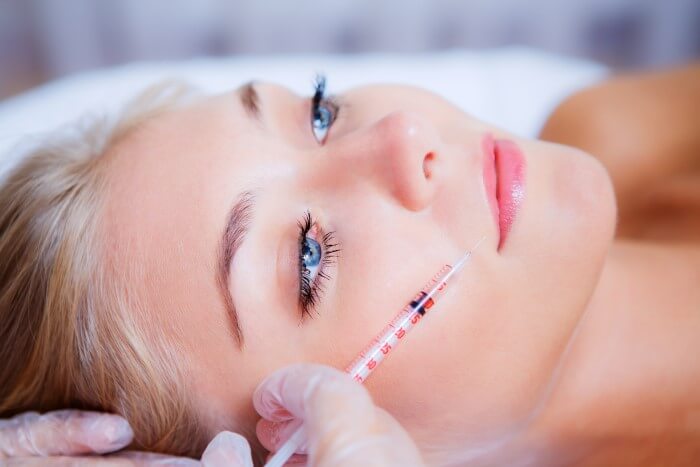Injectable fillers to help combat aging have been all the rage for years now. It seems like you can’t turn on a television or open up a magazine without seeing an ad for an injectable treatment to help with common aging concerns such as fine lines and wrinkles and loss of fullness/firmness in facial skin. But what are these injectable treatments, and how can you be sure that you are choosing the right one for your needs?
The best place to start is to talk to a medical professional. Here at the New England Cosmetic Surgery and Laser Center, we are here to answer your questions and help you determine what kind of dermal filler is right for you. Since we offer a number of different dermal filler options, here is the first of a two-part post to help you get started on finding the right filler for you.
Dermal fillers are different from injectables like Botox. Botox is an intramuscular treatment that is injected directly into the muscles of the face or neck in order to treat crow’s feet, frown lines, brow lines or furrowing, and skin bands in the neck area. It works by freezing those muscles so that they can’t contract, which prevents the appearance of lines, wrinkles and creases.
Dermal fillers are not injected into the muscles. Rather, they are injected underneath the skin in order to “fill” places where patients need or want more volume and a fuller, firmer appearance. Dermal fillers affect the dermis at different layers, depending on what is being treated and the results you are trying to achieve.
A popular dermal filler option is Juvederm. This is a well-known hyaluronic acid (HA) filler. Hyaluronic acid is a substance that is naturally present in the human body. For cosmetic and medical use, it is harvested from rooster combs or created in a laboratory for use in medicine and cosmetic procedures. Juvederm has been an FDA-approved dermal filler since 2006, and it can be used for a wide variety of cosmetic concerns — such as smoothing out facial wrinkles, plumping lips, treating acne scars and blemishes, and even reducing wrinkles in the hands. Results are long-lasting — generally 8 to 12 months before repeated treatments are needed.
Restylane is another choice. This is another HA filler, but it differs from others in that Restylane is entirely lab-created and contains no animal products at all. The HA in Restylane comes from a bacterium (much like Botox) — in this case, the Streptococcus species — through a natural fermentation process. This is important for many people because it means that Restylane has an excellent safety profile when it comes to potential allergens, and it does not require any allergy or skin testing prior to injection.
Restylane is also the oldest of the FDA-approved dermal fillers, having received approval in 2005. The main areas that this filler can treat include moderate to severe facial wrinkles and folds — especially nasolabial folds, often called marionette lines — and also to add fullness to the lips. It can also help treat a lack of facial firmness or fullness. Results tend to last about six months, on average.
To determine which of these fillers is best for your individual needs and concerns, call our office to schedule a consultation appointment. Our plastic surgery professionals are here to answer your questions and help figure out what the right injectable — or any other treatment or procedure — is for the results you want.
